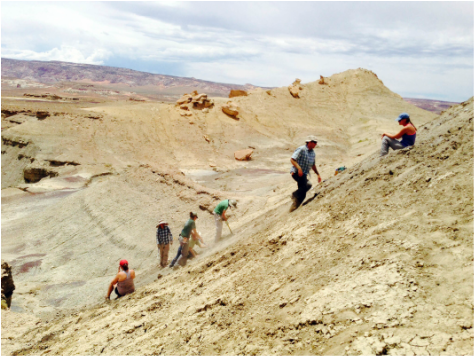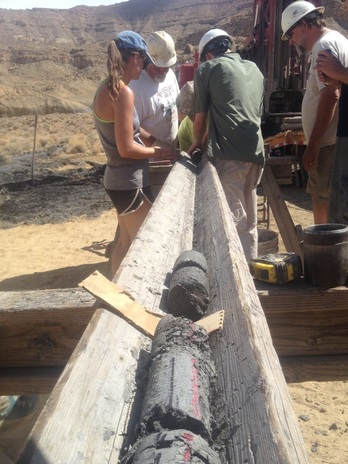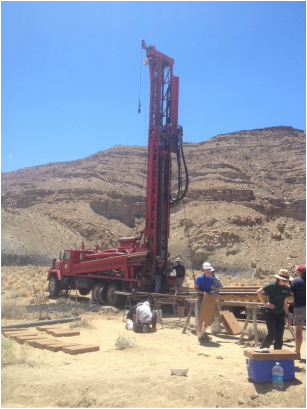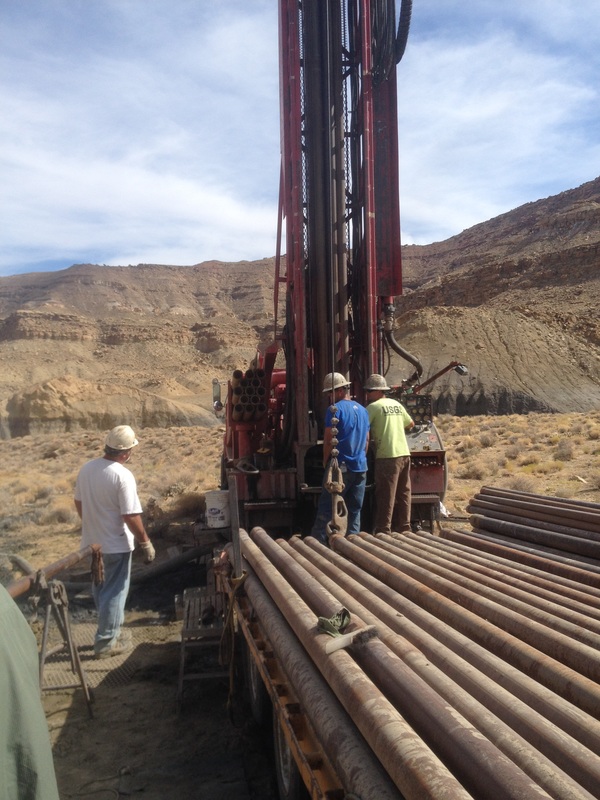Chris Lowery talking me through the stratigraphy near Big Water, Utah
Biotic changes at the Cenomanian-Turonian boundary
This research focuses on ocean acidification but does so in a different time period, the Cretaceous. At the Cenomanian - Turonian boundary (~93 million years ago) there was a biotic event where several group of calcareous organisms went extinct and several new ones originated. The aim of this project is to ascertain whether changes in volcanism could have driven these biotic shifts.
I collected data on the bulk and trace minerology of the samples, as well as working in the LIME lab at Penn State to collect strontium and calcium isotopes. I presented some preliminary results on this at GSA in Denver (September, 2016).
This project is part of a much larger NSF funded Earth Life Transitions project involving researchers from the University of Massachutettes Amhurst, Northwestern University, and the University of Colorado. The fieldwork for this project was completed in summer 2014 and the sampling party in summer 2015.
I collected data on the bulk and trace minerology of the samples, as well as working in the LIME lab at Penn State to collect strontium and calcium isotopes. I presented some preliminary results on this at GSA in Denver (September, 2016).
This project is part of a much larger NSF funded Earth Life Transitions project involving researchers from the University of Massachutettes Amhurst, Northwestern University, and the University of Colorado. The fieldwork for this project was completed in summer 2014 and the sampling party in summer 2015.
Left: Working in the heat (40 C/ 104 F) to collect samples for our research. The section had to be trenched to expose the fresh rocks below the weathered top surface. We had to trench using pick axes and shovels. Luckily we had a great field team to help the work move faster!
Right: The location of our field site in Southern Utah.
Right: The location of our field site in Southern Utah.
 From left to right. The lunch rock! This provided welcome shade from the sun. Me checking out the stratigraphy. The rocks behind me are older than the ones at our field site. Our home for a week - tents at the Wahweap campground, AZ.
From left to right. The lunch rock! This provided welcome shade from the sun. Me checking out the stratigraphy. The rocks behind me are older than the ones at our field site. Our home for a week - tents at the Wahweap campground, AZ.
As well as collecting samples from the outcrop, we took a drill core of the same interval ~ 20 miles away.
Left: Amanda Parker, Matt Jones, and Brad Sageman wait eagerly for the arrival of the next core. Centre: The drill rig - operated by the USGS. Right: picking up the next core barrel.




